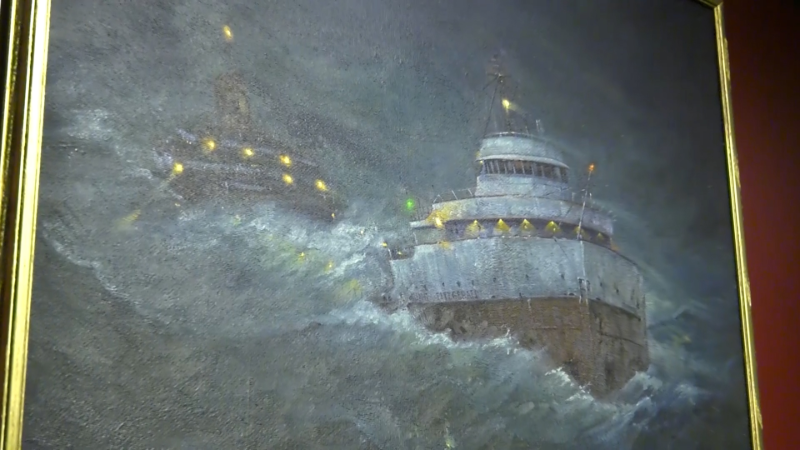Top 5 strongest US hurricane landfalls
Five monster storms have slammed into the United States with sustained winds 155 mph or higher. Here's how they rank.
AccuWeather’s Geoff Cornish shares the top 5 strongest hurricanes to ever make landfall in recorded U.S. history.
What were the strongest hurricanes to make landfall in the United States in recorded history? While storms like Katrina and Helene are infamous for the catastrophic destruction caused by flooding, these are the hurricanes that had the highest wind speeds when making landfall, according to the National Hurricane Center.
5: Hurricane Maria 2017: 155 mph

On Sept. 20, 2017, Category 4 Hurricane Maria made landfall on Puerto Rico's southeastern coast, devastating the island with maximum sustained winds of 155 mph, just 1 mph shy of Category 5. Maria is the second-deadliest U.S. hurricane on record, with 3,059 deaths attributed to the storm.
4: Hurricane Michael 2018: 160 mph

Category 5 Hurricane Michael hit Florida's Panhandle on Oct. 10, 2018, with 160-mph winds. At the time of landfall, it was considered a Category 4 storm, but this was reassessed in April of 2019, when the NHC upgraded the winds by 5 mph, from 155 mph to 160 mph.
3: Hurricane Andrew 1992: 165 mph

Hurricane Andrew roared ashore near Miami, Florida, on Aug. 4, 1992, as a Category 5 storm with 165-mph winds. Andrew was the costliest U.S. hurricane until 2005's Hurricane Katrina. It was the last Category 5 storm to hit the United States until Michael in 2018.
2: Hurricane Camille 1969: 175 mph

On Aug. 18, 1969, Category 5 Hurricane Camille slammed the Mississippi Gulf Coast with 175-mph winds. While the lowest pressure was originally reported as 26.70 inches of mercury (904 mb), a 2014 analysis lowered that number to 26.58 inches of mercury (900 mb).
1: The Labor Day Hurricane 1935: 185 mph

The strongest storm to ever hit the U.S., the Labor Day Hurricane hit the Florida Keys as a Category 5 storm with estimated sustained winds of 185 mph. This storm also holds the U.S. record for lowest atmospheric pressure at landfall, at 26.34 inches of mercury (892 mb).
What about Hurricane Katrina?

Hurricane Katrina viewed from the NOAA-15 satellite on August 18, 2005. (NOAA/JHU-APL)
While Hurricane Katrina in 2005 was a powerful Category 5 storm over the Gulf, it was officially a Category 3 with 125-mph sustained winds at landfall in Louisiana, so it did not make the Top 5. Katrina's pressure at landfall, however, does rank it in the top 5 most intense hurricanes.

Ranking storms by pressure
If atmospheric pressure at landfall is used to measure intensity instead of sustained winds, the top 5 are slightly different:
1: Labor Day 1935: 26.34 inches of mercury (892 mb)
2: Camille 1969: 26.58 inches of mercury (900 mb)
3: Michael 2018: 27.14 inches of mercury (919 mb)
4: A tie between Maria 2017 and Katrina 2005: 27.17 inches of mercury (920 mb)
5: Andrew 1992: 27.23 inches of mercury (922 mb)
Other powerful hurricanes that didn't make the top 5 list
Other particularly strong hurricanes to hit the United States included the Indianola Hurricane of 1886, which hit Texas as a Category 4 storm with winds of 150 mph and a pressure of (925 mb), and the 1919 Florida Keys hurricane, which made landfall at the same wind strength of 150 mph and a pressure of 27.37 inches of mercury (927 mb).
If we look at only contiguous U.S. landfalls, Hurricane Maria is replaced on the Top 5 list by the 1886 and 1919 storms. These storms would tie for the number five spot for sustained winds at landfall—150 mph—with at least five other storms. The 1886 storm becomes the fifth-highest-ranked atmospheric pressure.
Super typhoons that affected US territories in the Pacific
Both Guam and the Marshall Islands are unincorporated U.S. territories that have been hit by very strong typhoons. This list does not consider Typhoon Karen 1972, which struck Guam, or Typhoon Yutu 2018, which struck Tainan in the northern Marshall Islands. Meteorological statistics for those storms are in question and estimates range from 26.72 to 27.76 inches of mercury (905 to 940 mb) pressure, and 155- to 175-mph winds, according to various sources.
Report a Typo














